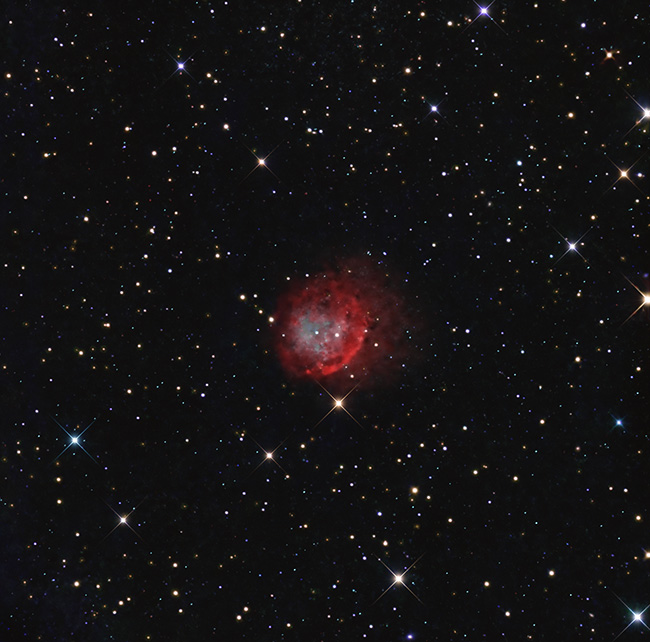
|
Date: April 26-28-29, 2024 - Location: Dark Sky Observatory - Fort Davis, TX
|

|
Abell 28 (PK 158+37.1) is a faint planetary nebula located in the constellation Ursa Major[1]. Abell 28 was discovered by George Abell in 1955[2]. The progenitor white dwarf star is located roughly in the center of the nebula and can be recognized by its blue color. As a mid-sized star such as our Sun ages, it depletes its supply of hydrogen fuel in its core and begins fusing helium. In this stage of its evolution it swells to a red giant star. This red giant becomes increasingly unstable and begins expelling the outer layers of its atmosphere until, with its available fusionable fuel consumed, only the very hot core remains[3]. This very hot core radiates prodigious ultraviolet radiation that excites the expelled stellar atmosphere to glow. The glowing gasses form the visible planetary nebula. The nebula will continue to expand and dissipate into interstellar space. After several thousand years, the nebula will disappear leaving only the dying white dwarf. This fate is destined for our own Sun in approximately five billion years[4]. Abell 28 is not often imaged and requires long exposures through narrowband filters. The image above is orientated with north to the top and east to the left. A dense wave has formed on the southwest rim of the primary nebula. It appears to me it has interacted with faint nebulosity as it expanded into and collided with this tenuous nebular matter. Image integration and processing were accomplished using the software applications PixInsightTM, CCDStackTM, and PhotoshopTM. The image was assembled by mapping Ha to red and OIII to blue and green. The stars were overlaid with data from a red, green, and blue filtered image. This processing technique produces a near true color image.
Member of the Dark Sky Observatory Collaborative
References
|